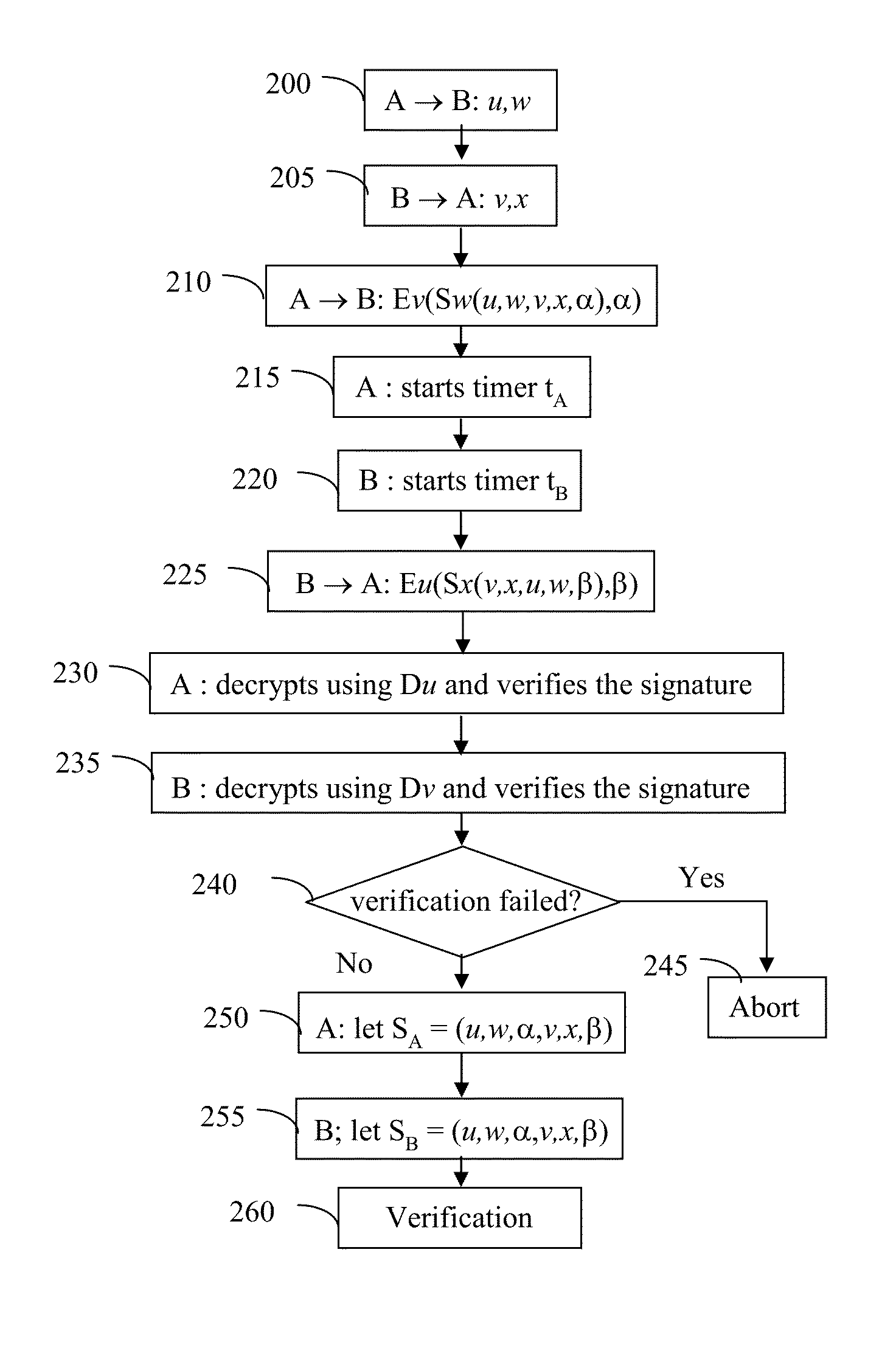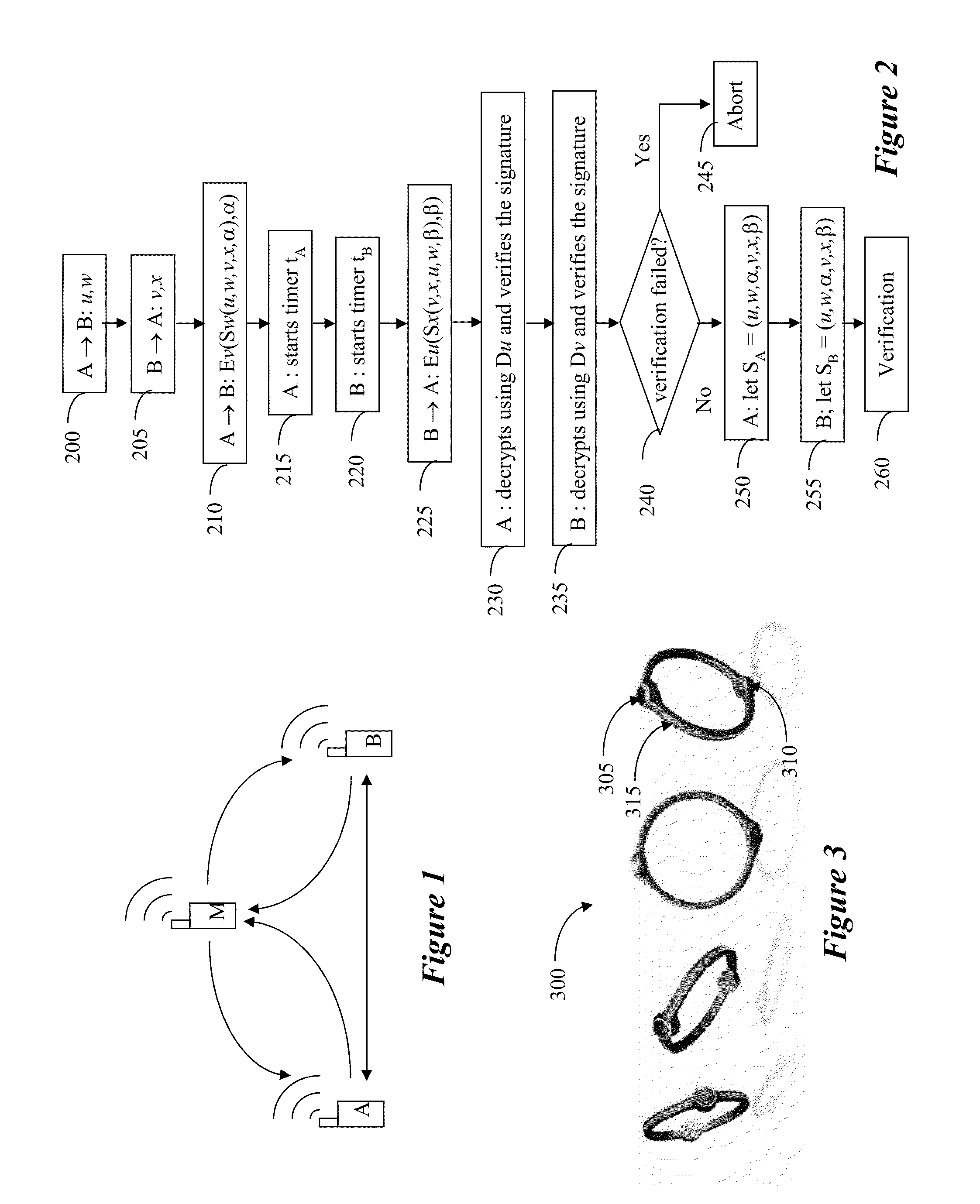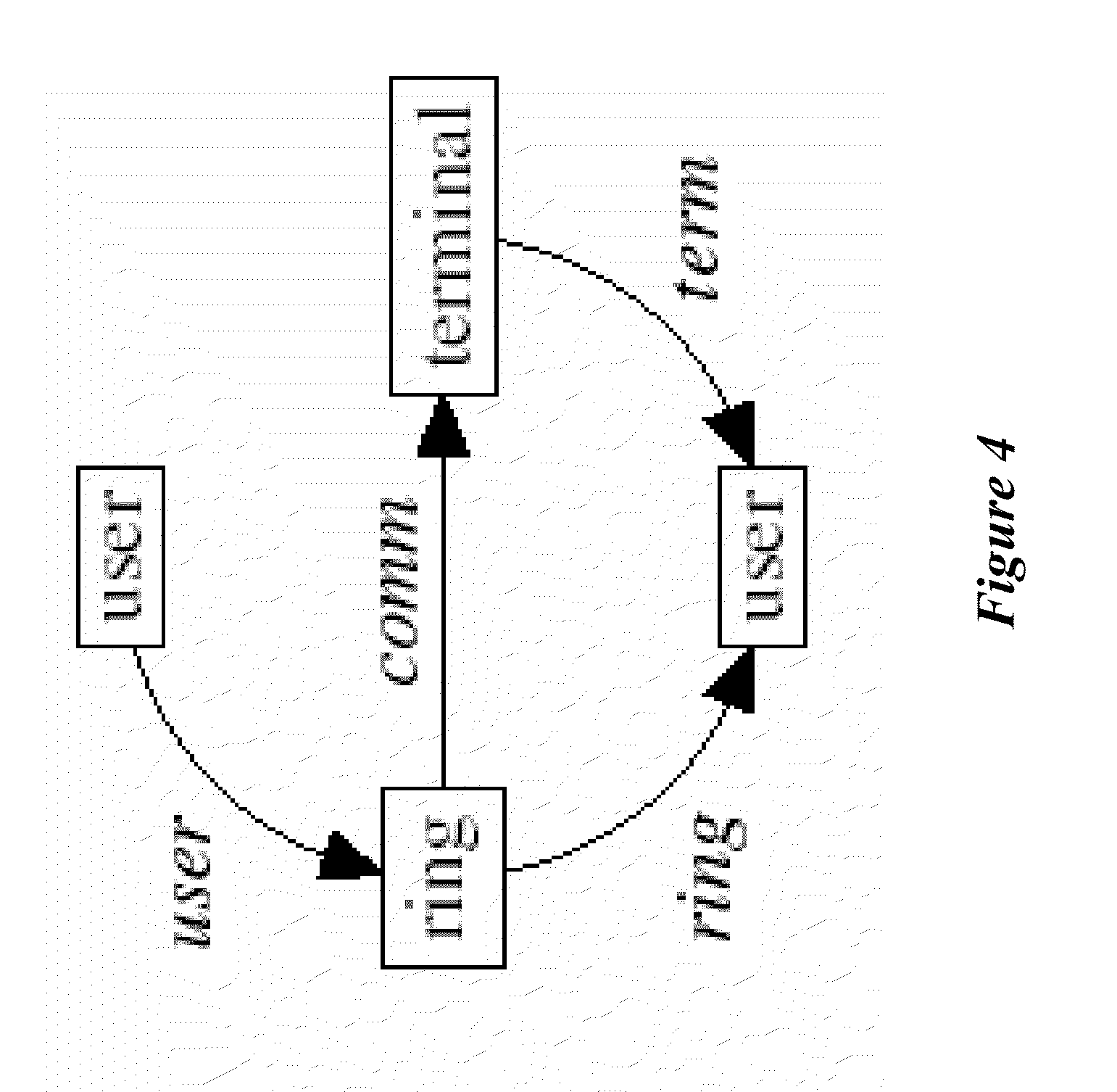System and method for human assisted secure information exchange
a technology of secure information exchange and human assisted, applied in the field of secure electronic communication over an insecure communication channel, can solve the problems of increasing the concern about fraud and phishing attacks, difficulty in achieving, and a priori trust undermines the basic premise of services such as free wifi access points, etc., and achieves low cost, low cost, and easy to understand and use.
- Summary
- Abstract
- Description
- Claims
- Application Information
AI Technical Summary
Benefits of technology
Problems solved by technology
Method used
Image
Examples
Embodiment Construction
[0043]Various embodiments of the invention enable a user to ensure that two electronic devices communicate securely over an insecure line, such as a wireless or wired communication line. Various embodiments prevent or alert the user to the presence of a third party security attack, such as a man-in-the middle attack. The following detailed description provides explanation of the general concept of the invention and particular implementations of various embodiments.
[0044]FIG. 1 illustrates a potential man-in-the middle situation, which may be detected and / or avoided according to various embodiments of the invention. In this example, device A seeks to securely communicate with device B; however, device M may be eavesdropping. For example, A may initiate a procedure for setting up the communication channel with B by sending device B electronic transmission SA. At that point, M may “highjack” A's transmission and relay to B a modified signal, SM, pretending to be sender A. Upon receivin...
PUM
 Login to View More
Login to View More Abstract
Description
Claims
Application Information
 Login to View More
Login to View More - R&D
- Intellectual Property
- Life Sciences
- Materials
- Tech Scout
- Unparalleled Data Quality
- Higher Quality Content
- 60% Fewer Hallucinations
Browse by: Latest US Patents, China's latest patents, Technical Efficacy Thesaurus, Application Domain, Technology Topic, Popular Technical Reports.
© 2025 PatSnap. All rights reserved.Legal|Privacy policy|Modern Slavery Act Transparency Statement|Sitemap|About US| Contact US: help@patsnap.com



